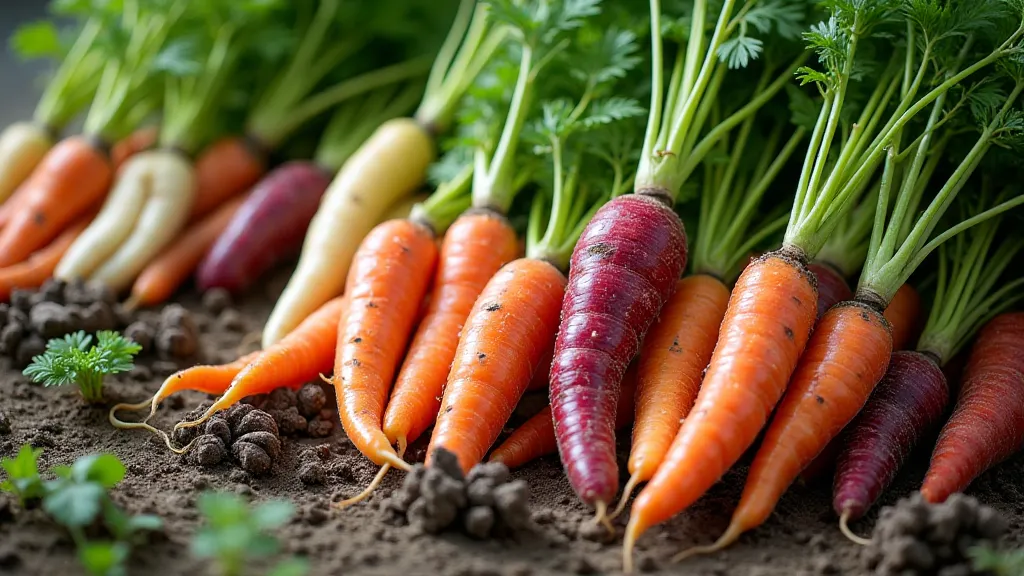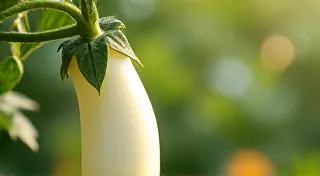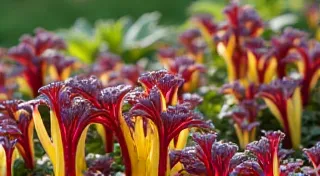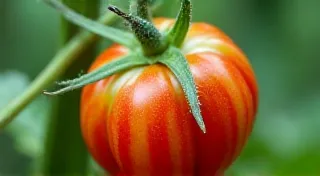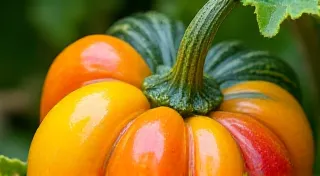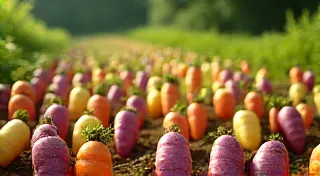Purple Carrot vs Orange Carrot - Which One to Choose?
For many, the humble carrot conjures images of bright orange roots pulled fresh from the garden. But did you know carrots come in a rainbow of colors, including deep purple? While both purple and orange carrots offer deliciousness and nutritional benefits, they differ in several key aspects. This article will compare and contrast these vibrant root vegetables, helping you decide which – or both! – to grow in your garden.
A History of Color: From Purple to Orange
Interestingly, the most common orange carrot we know today is a relatively recent development. Carrots were originally purple, yellow, white, red, and black. The orange color we associate with carrots arose in the 17th century in the Netherlands, selectively bred by Dutch growers to honor the House of Orange. The vibrant orange hues were also effectively marketed, leading to their widespread popularity. Purple carrots, along with other colored varieties, have experienced a resurgence in recent years as gardeners and chefs seek unique and visually appealing produce. The desire for unusual and colorful produce extends beyond carrots, as gardeners increasingly experiment with varieties like striped tomatoes, adding splashes of visual interest to their vegetable patches.
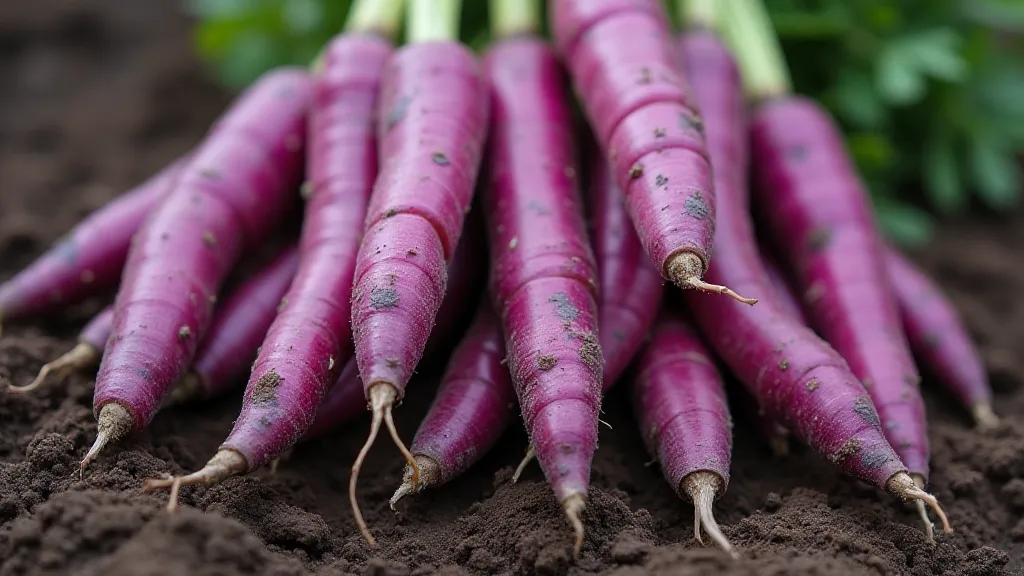
Nutritional Differences: Beyond Beta-Carotene
While both purple and orange carrots are excellent sources of vitamins and minerals, their nutritional profiles differ slightly. Orange carrots are well-known for their beta-carotene, a precursor to vitamin A that’s responsible for the bright color and beneficial antioxidant properties. Purple carrots, however, owe their color to anthocyanins – the same antioxidants found in blueberries and blackberries. Anthocyanins offer a unique set of health benefits, including potential anti-inflammatory and cardiovascular protective effects. These intriguing pigments aren’t exclusive to purple carrots; you'll find similar vibrant compounds in vegetables like golden beets, adding a sunny disposition to both your garden and your plate.
Here's a simplified comparison:
- Orange Carrots: Rich in beta-carotene (Vitamin A precursor), Vitamin K, Potassium.
- Purple Carrots: Rich in anthocyanins (antioxidants), Fiber, and potentially higher levels of certain vitamins depending on the variety.
Growing Requirements: Surprisingly Similar
The good news is that growing purple and orange carrots is remarkably similar. Both types prefer full sun (at least 6 hours per day) and well-drained, loose soil. Carrots are notoriously picky about soil compaction, so ensuring loose, workable soil is crucial for straight, healthy roots. The beauty of a diverse garden isn’t just about the colors and flavors; it’s about appreciating the nuances of each variety, much like the elegant appeal of a white eggplant adds to a visually stunning landscape.
Here are some general guidelines:
A slight difference to note: Some gardeners find that purple carrot varieties sometimes take a little longer to germinate than orange varieties, but this is usually insignificant. Success in gardening often comes down to understanding the specific needs of each plant – a lesson that applies whether you’re cultivating vibrant carrots or striving for the picturesque beauty of a unique vegetable patch.
Taste and Texture: A Subtle Distinction
While both orange and purple carrots are undeniably sweet and delicious, their taste and texture can differ subtly. Orange carrots often have a classic, familiar sweetness. Purple carrots, on the other hand, often possess a slightly earthier, sometimes even a bit spicier flavor. Their texture can sometimes be a touch more firm and crisp compared to some orange varieties, though this is variety-dependent. The deliberate choices we make when cultivating our gardens—selecting varieties based on color, flavor, and texture—are key to crafting a garden narrative as compelling as the chromatic echoes of a carefully planned landscape.
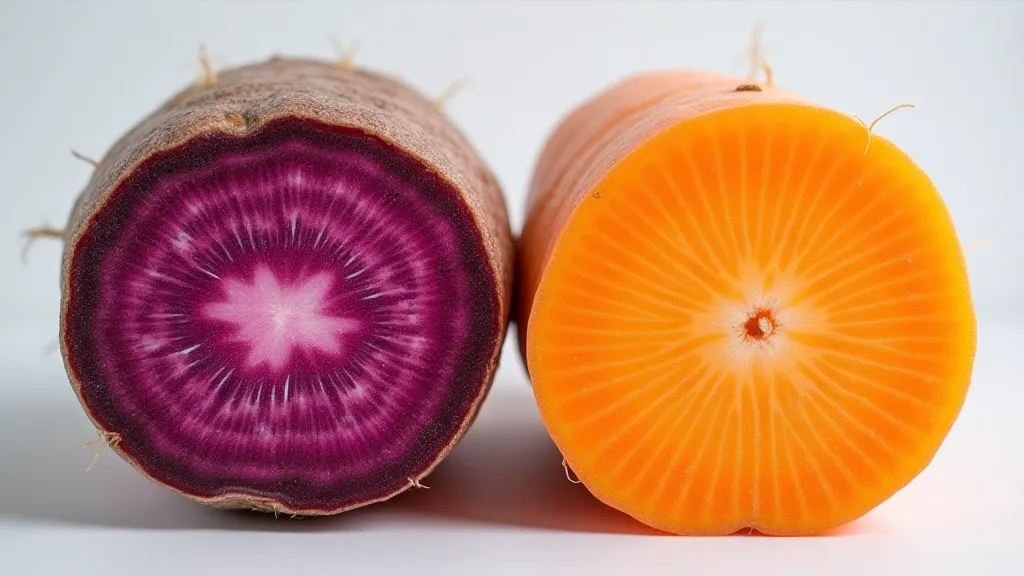
Beyond the Basics: Choosing Varieties & Soil Considerations
Selecting the right carrot variety extends beyond simply choosing between orange and purple. Within each color category, there’s a wide range of sizes, shapes, and flavor profiles. Some purple carrots are short and round, while others are long and tapered. Some orange carrots are Nantes types, known for their sweetness, while others are Imperator types, prized for their length and uniform shape. Experimenting with different varieties can be a rewarding journey in itself. Soil preparation is critical for all carrot varieties. Carrots thrive in loose, sandy loam that’s free of rocks and debris. Adding compost or well-rotted manure to the soil can improve its texture and fertility. Avoid heavy clay soils, as they can lead to stunted and misshapen roots. If your soil is heavy, consider growing carrots in raised beds or containers.
Addressing Common Carrot Growing Challenges
Carrot growing isn't always a breeze. Several challenges can arise, impacting your harvest. One common problem is 'crinkly top' syndrome, where the carrot foliage is thick and bushy, hindering light penetration and potentially affecting root development. This can be mitigated by thinning seedlings and ensuring proper spacing. Another issue is carrot root fly, a pest that lays its eggs on carrot foliage. Companion planting, particularly with strong-smelling herbs like rosemary and sage, can help deter carrot root fly. Consistent watering is also crucial, especially during dry spells, as inconsistent moisture can lead to cracked roots. And remember, patience is key! Carrots take time to mature, so don’t be tempted to harvest them too early.
Choosing the Right Carrot for Your Garden
Ultimately, the best carrot to choose depends on your personal preferences and gardening goals. If you're looking for a classic, familiar flavor and a boost of beta-carotene, orange carrots are a great choice. If you want to add visual interest to your garden and enjoy a slightly different flavor profile, purple carrots are an excellent option. Why not grow both? The variety of colors and flavors will make your vegetable garden truly unique and beautiful. The joy of gardening lies not just in the harvest, but also in the process of nurturing life and creating a space of beauty and abundance. The diverse palette of colors and textures found in the garden, from the vibrant hues of carrots to the unexpected forms of other vegetables, contributes to a holistic and aesthetically pleasing experience.
